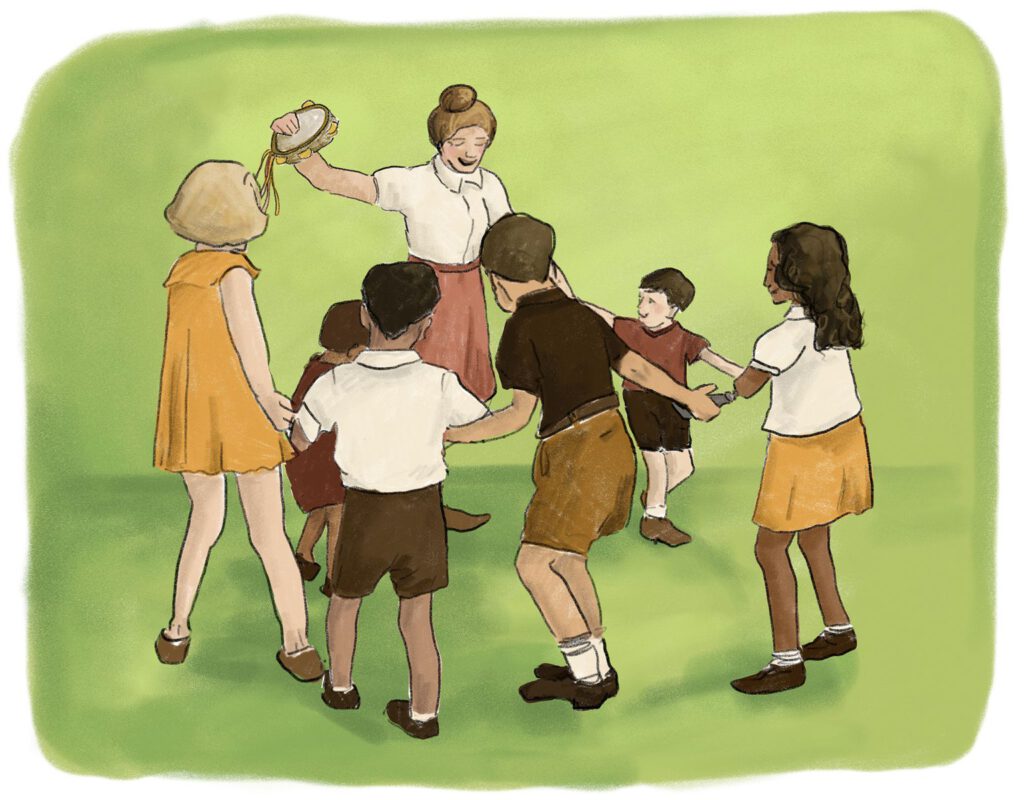Skilled Jewish educators are well versed in developing content and methodologies for Jewish learning, identity development, and community building. As we know, however, learning experiences do not happen in a vacuum—they occur within the context of physical spaces, imbued (whether intentionally or not) with cultural and ecological elements and psycho-social dynamics. As Jewish educators, the way we position ourselves and our students in relationship to each other and the physical spaces we inhabit during Jewish learning experiences has a material impact on the quality and efficacy of learning dynamics. This pedagogy of Jewish place and positionality articulates the use of a combination of prescribed physical preparations of space based on a range of Jewish typologies alongside emergent responsive positioning based on foundational Jewish narrative archetypes to more effectively shape and respond to interpersonal and spatial dynamics. Through use of these dually prescribed and emergent practices as a “choreography” for their use of space and positioning, Jewish educators “who know their place” (hamakir et m’komo) are better equipped to tap into powerful embodied practices that can elevate the learning and teaching experience and create stronger conditions for Jewish meaning-making and connection.
Jewish Place and Positionality: A Choreography of Pedagogical Practice

Mitsui Collective Cleveland, OH

Yoshi Silverstein.mp3
More PEDAGOGIES RESOURCES
A Pedagogy of the 48: Connecting Pirkei Avot, LIfe, and Learning
Dr. Gila Silverman
Director of Jewish Lifelong Learning
Siegel Lifelong Learning, Case Western Reserve University
This pedagogy invites participants to consider how the 48 different ways of “acquiring Torah” resonates with them
Access ResourceL’Shem Yichud: A Pedagogy For the Sake of Integration
Rabbi Jesse Paikin
Executive Director, Base
L’shem Yichud: For the Sake of Integration is a pedagogy based on an ancient practice of intention setting.
Access ResourceMachloket-i: A Personal, Professional Development Program
Edward Magiste
Educator
The Temple Tifereth Israel
Designed as a professional development strategy, this pedagogy of Machloket targets veteran educators asking to develop their teaching and ideas
Access ResourceLoving Goodness: A Pedagogy through Individuality and Belonging
Charles Herman
Former Executive Director & Founder
The Nesiya Institute
The pedagogy of Loving Goodness explores the tension between self-love and the love of the other
Access ResourceThe Pedagogy of Argument
Robbie Gringras
Co-Founder and Co-Director
For the Sake of Argument
The Pedagogy of Argument seeks to develop learners who are passionate about debates
Access ResourcePedagogy of Kinyan Torah: Helping Students Develop Their Own Interpretations of Torah
Ilana Gleicher Bloom
Founder of Mensch Academy at Mishkan Chicago,
Doctoral Candidate in Jewish Education, Coordinator of Pardes Experiential Educators Program
The pedagogy of Kinyan Torah helps educators support all learners to find their own unique Torah within themselves.
Access Resource